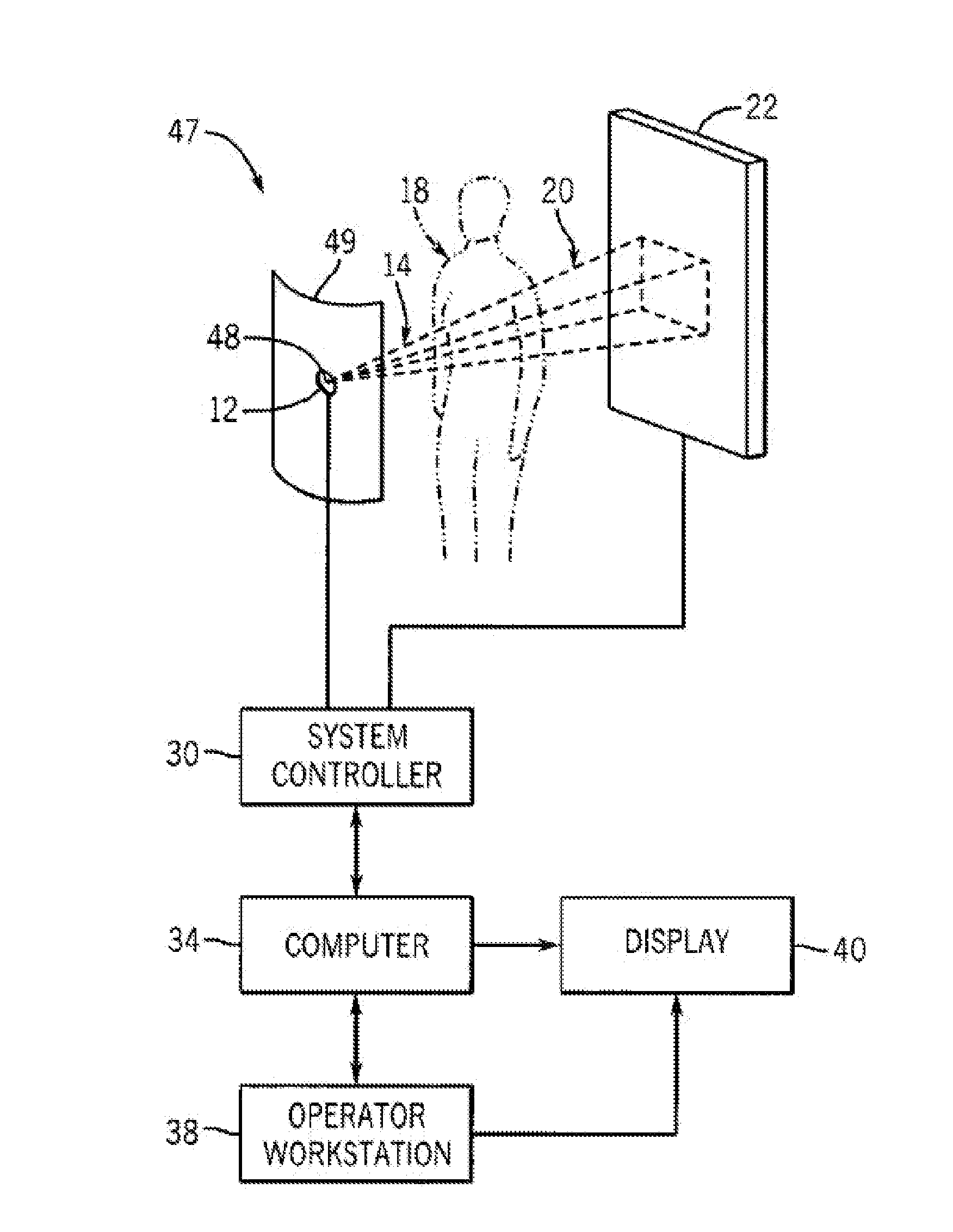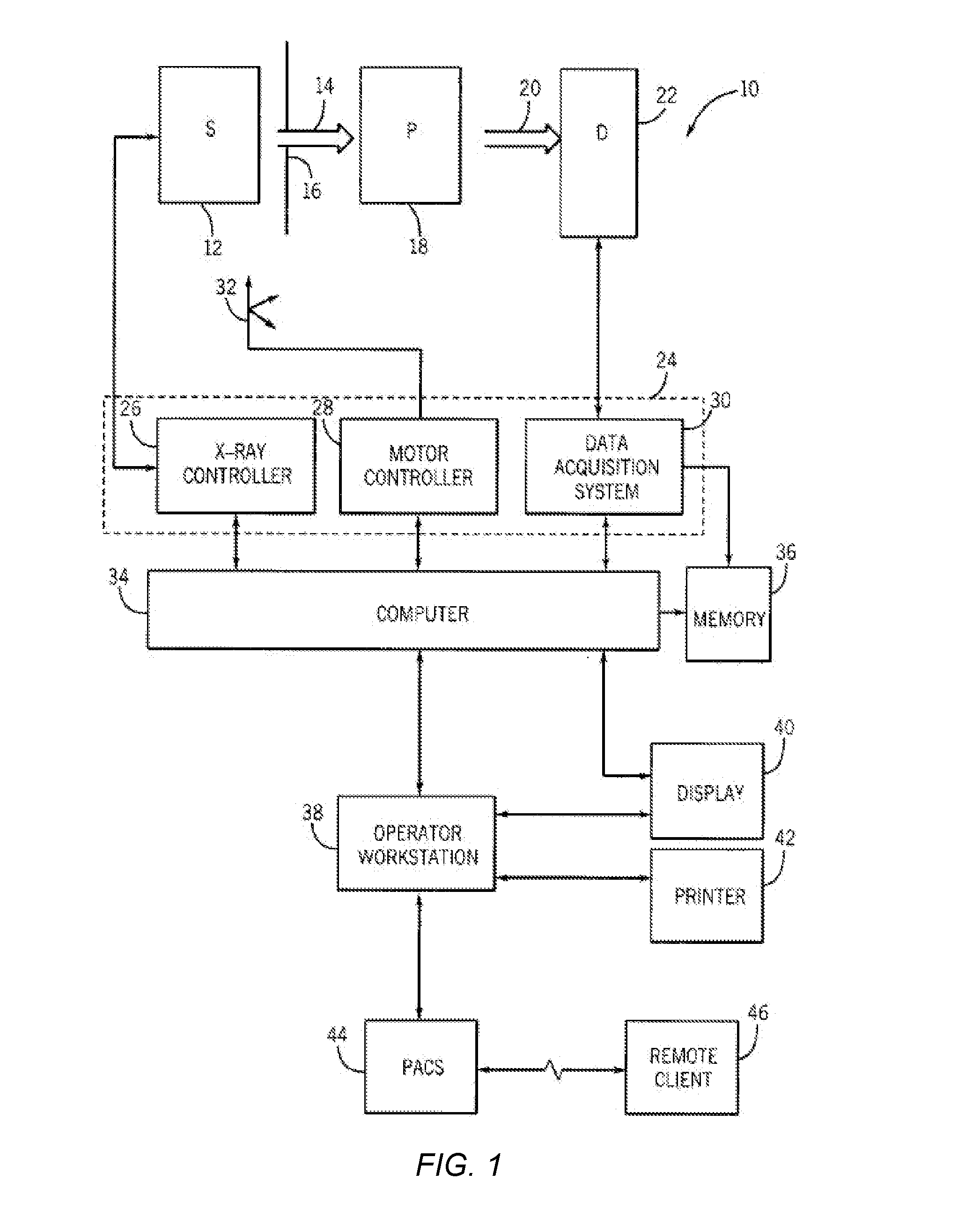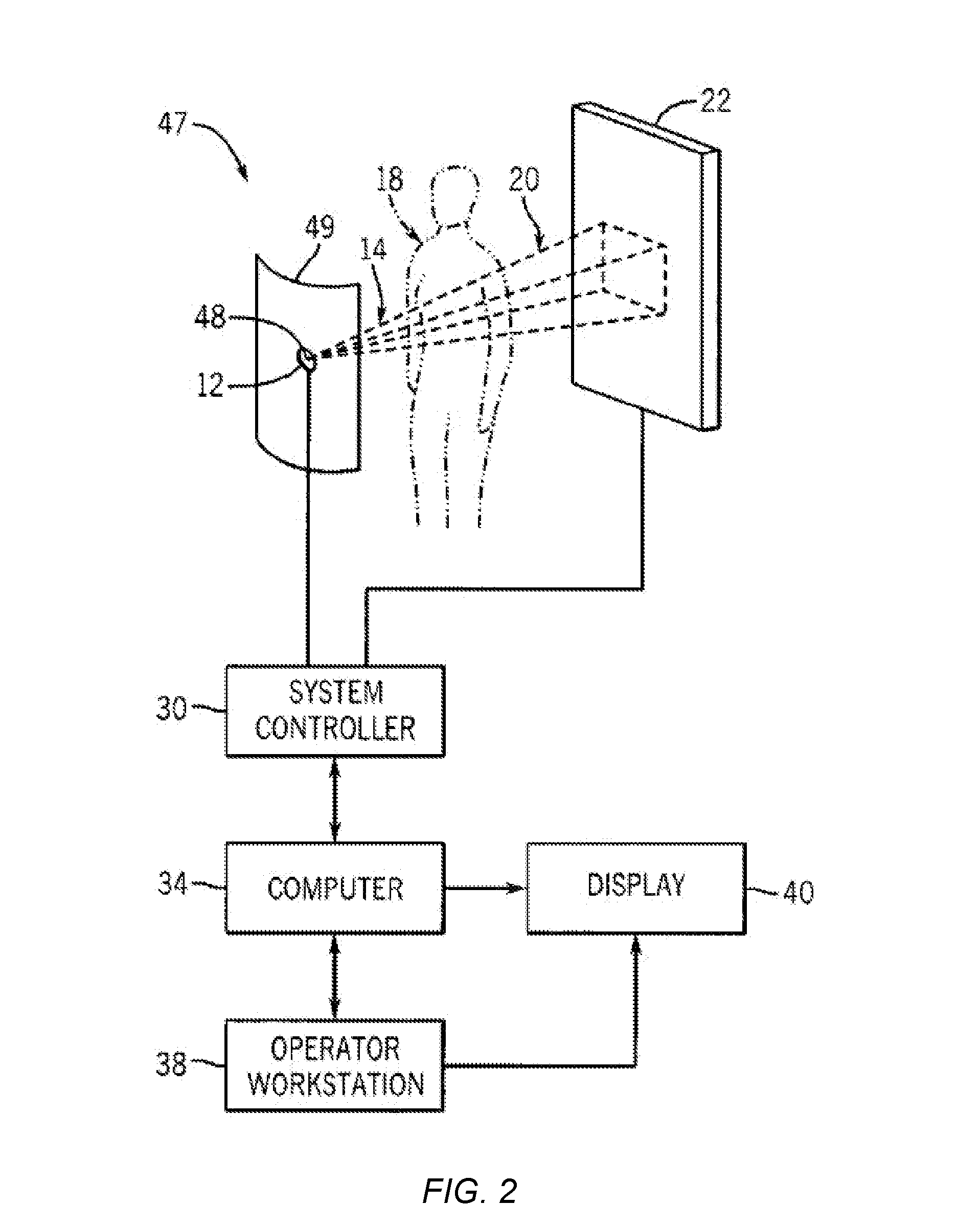Digital breast tomosynthesis reconstruction using adaptive voxel grid
a tomosynthesis and digital technology, applied in tomography, image enhancement, instruments, etc., can solve the problems of reducing the sensitivity of tomosynthesis for the detection of microcalcifications, and the impracticality of reducing the slice spacing in view of workflow and/or data storage considerations
- Summary
- Abstract
- Description
- Claims
- Application Information
AI Technical Summary
Benefits of technology
Problems solved by technology
Method used
Image
Examples
Embodiment Construction
[0022]Embodiments disclosed herein include an imaging method to reconstruct a tomosynthesis image in such a way so as to improve image quality (e.g., with respect to small microcalcifications). Some embodiments are associated with systems and / or computer-readable medium that may help perform such a method.
[0023]FIG. 1 is a diagrammatical representation of an exemplary tomosynthesis system, designated generally by the reference numeral 10, for acquiring, processing and displaying tomosynthesis images, including images of various slices or slabs through a subject of interest in accordance with the present techniques. In the embodiment illustrated in FIG. 1, the tomosynthesis system 10 includes a source 12 of X-ray radiation which is movable generally in a plane, or in three dimensions. In the exemplary embodiment, the X-ray source 12 typically includes an X-ray tube and associated support and filtering components.
[0024]A stream of radiation 14 is emitted by source 12 and passes into a...
PUM
 Login to View More
Login to View More Abstract
Description
Claims
Application Information
 Login to View More
Login to View More - R&D
- Intellectual Property
- Life Sciences
- Materials
- Tech Scout
- Unparalleled Data Quality
- Higher Quality Content
- 60% Fewer Hallucinations
Browse by: Latest US Patents, China's latest patents, Technical Efficacy Thesaurus, Application Domain, Technology Topic, Popular Technical Reports.
© 2025 PatSnap. All rights reserved.Legal|Privacy policy|Modern Slavery Act Transparency Statement|Sitemap|About US| Contact US: help@patsnap.com



